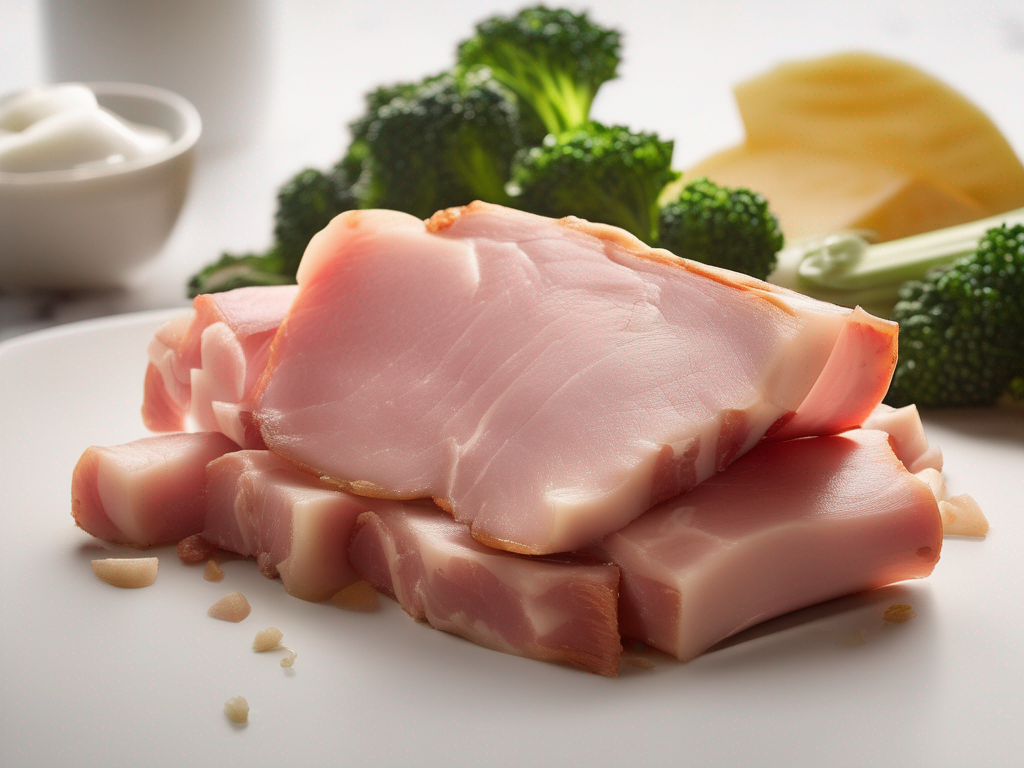
Top Tips for Extending the Shelf Life of Canadian Bacon Chunk
Get Your Free Food Safety Cheat Sheet
30 most common foods with instant answers. Print it and stick it on your fridge—completely free!
Top Tips for Extending the Shelf Life of Canadian Bacon Chunk
When it comes to Canadian bacon chunk, extending its shelf life is essential to maintain its quality and safety. Proper storage and handling can make a significant difference in how long your Canadian bacon chunk stays fresh. In this blog post, we will discuss some top tips for extending the shelf life of Canadian bacon chunk. (Canadian bacon chunk)
Understanding Canadian Bacon Chunk
Before we delve into the tips for extending the shelf life of Canadian bacon chunk, let's first understand what it is. Canadian bacon chunk is a type of cured pork product that is typically made from lean pork loin. It is cured with salt and sugar, and sometimes smoked to add flavor. Canadian bacon chunk is a popular ingredient in various dishes, including breakfast items, sandwiches, and salads.
Proper Storage
Proper storage is crucial for extending the shelf life of Canadian bacon chunk. Follow these tips to ensure your Canadian bacon chunk stays fresh for longer:
Refrigeration
- Store Canadian bacon chunk in the refrigerator at a temperature below 40°F (4°C).
- Keep the Canadian bacon chunk in its original packaging or wrap it tightly in plastic wrap to prevent exposure to air and moisture.
- Place the Canadian bacon chunk in the coldest part of the refrigerator, such as the meat drawer.
Freezing
- If you won't be using the Canadian bacon chunk within a few days, consider freezing it for longer storage.
- Wrap the Canadian bacon chunk tightly in freezer-safe packaging, such as plastic wrap or freezer bags, to prevent freezer burn.
- Label the packaging with the date to keep track of how long the Canadian bacon chunk has been frozen.
Thawing
- When ready to use frozen Canadian bacon chunk, thaw it in the refrigerator overnight.
- Avoid thawing Canadian bacon chunk at room temperature to prevent bacterial growth.
Handling and Usage Tips
In addition to proper storage, how you handle and use Canadian bacon chunk can also impact its shelf life. Follow these tips for optimal handling and usage:
Avoid Cross-Contamination
- Always use clean utensils and cutting boards when handling Canadian bacon chunk to prevent cross-contamination with other foods.
- Wash your hands thoroughly before and after handling Canadian bacon chunk.
Cook Thoroughly
- Canadian bacon chunk is fully cooked, but heating it properly before consumption can help kill any bacteria that may be present.
- Cook Canadian bacon chunk to an internal temperature of 165°F (74°C) before serving.
Use By Date
- Check the expiration date on the packaging of the Canadian bacon chunk and consume it before the indicated date for the best quality.
Monitoring Shelf Life
It's essential to monitor the shelf life of your Canadian bacon chunk to ensure its freshness and safety. Here are some tips for monitoring the shelf life:
Smell and Appearance
- Inspect the Canadian bacon chunk for any signs of spoilage, such as an off smell, slimy texture, or discoloration.
- If the Canadian bacon chunk appears or smells off, it's best to discard it.
Storage Time
- Keep track of how long the Canadian bacon chunk has been stored in the refrigerator or freezer.
- Use the "first in, first out" principle to ensure older Canadian bacon chunk is used before newer ones.
Conclusion
By following these top tips for extending the shelf life of Canadian bacon chunk, you can enjoy this delicious ingredient for longer while ensuring its quality and safety. Proper storage, handling, and monitoring are key to maximizing the shelf life of Canadian bacon chunk. Remember to always follow food safety guidelines and use your best judgment when it comes to the freshness of your Canadian bacon chunk. (Canadian bacon chunk)
Authoritative Food Safety References
These agencies and university labs inform every tip and health precaution we publish.
USDA FoodKeeper – Cold Storage Guidelines
Official refrigerator, freezer, and pantry timelines maintained by the U.S. Department of Agriculture.
Visit USDA FoodKeeperFDA Produce Safety Rule & Grower Guidance
Field-to-fridge handling practices that prevent contamination of fruits, vegetables, and leafy greens.
Visit FDA Produce SafetyCDC Foodborne Illness Prevention Hub
Surveillance-backed guidance on pathogens, symptoms, and steps to reduce foodborne illness risk.
Visit CDC Food SafetyUC Davis Postharvest Technology Center
University research detailing optimal storage atmospheres for produce after harvest.
Visit UC Davis PostharvestPenn State Extension – Home Food Preservation & Safety
Peer-reviewed extension bulletins on safe canning, chilling, and reheating practices.
Visit Penn State ExtensionGet Your Free Food Safety Cheat Sheet
30 most common foods with instant answers. Print it and stick it on your fridge—completely free! Want more? Upgrade to the complete guide with 70+ foods.
Scan your food directly and get instant safety info using our AI-powered camera feature.